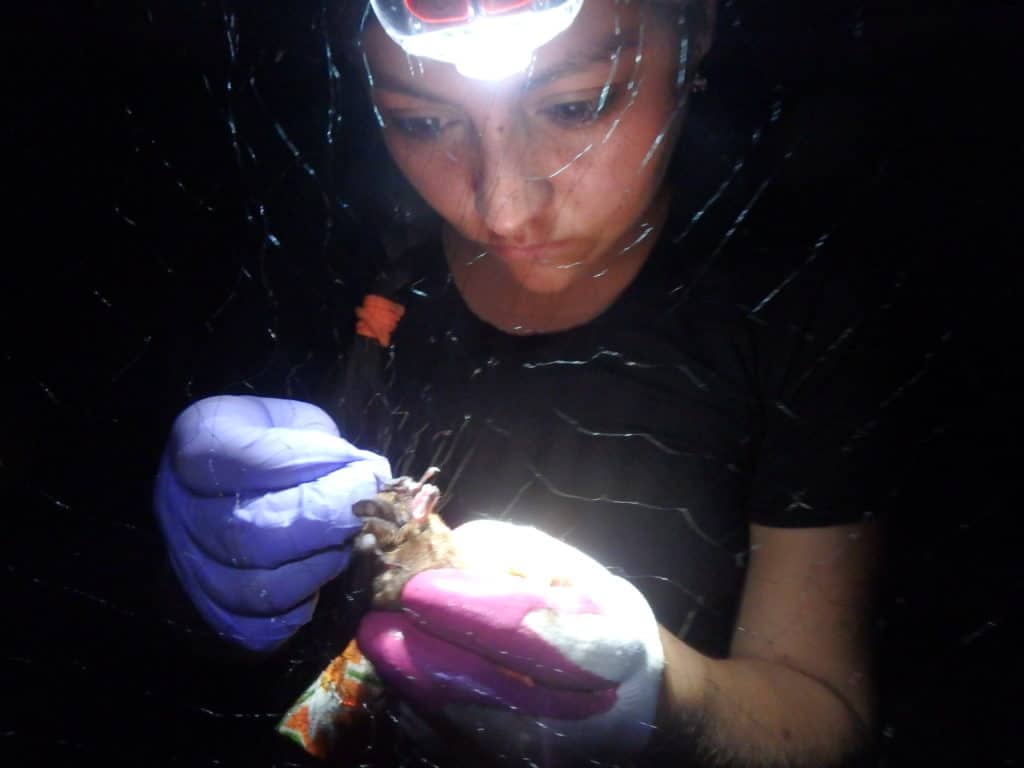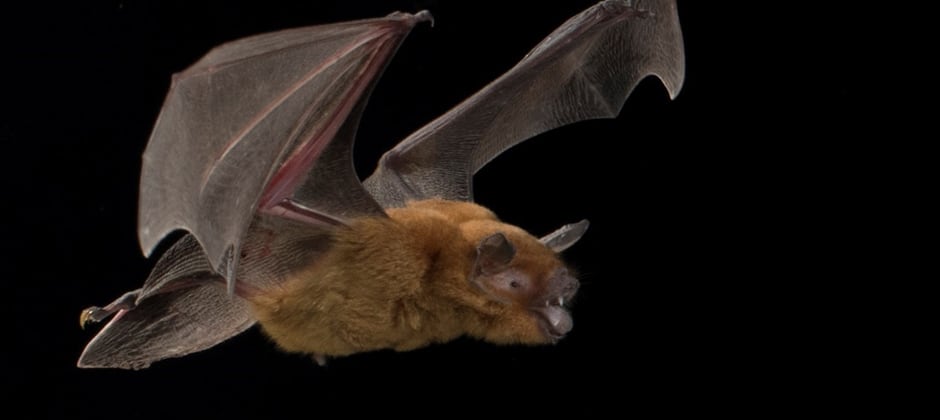Share this article
Genetic test can determine pesticide exposure in bats
A new test using just a drop of blood can tell research how much exposure bats have had to pesticides.
“We know very little about the effects of pesticides, and we know very little about if bats are exposed to pesticides or not,” said Natalia Sandoval Herrera, a PhD candidate at the University of Toronto and lead author of a recent study published in Environmental Toxicology and Chemistry.
But Sandoval-Herrera and her colleagues did know that bats tend to forage in croplands, especially at night when pesticides are often sprayed.
The team decided to use a test to determine genotoxicity levels — levels of strange molecules in the bats’ DNA. High genotoxicity levels would suggest the bats had likely been exposed to high levels of pesticides.
Sandoval-Herrera and her colleagues collected Mexican mustached bats (Pteronotus mexicanus) from caves in neotropical ecosystems in west-central Mexico, some closer to agriculture and some farther away. Sandoval-Herrera knew the medium-sized bat species would be easy to take blood from, and she also knew this species had been recorded foraging on crops.

Sandoval-Herrera removes a bat from a mist net. Credit: Natalia Sandoval-Herrera
After determining likely pesticide usage in different areas, they netted bats at three sites where the bats were expected to range from low to high chemical exposure and quickly collected blood from a leg of each bat.
“That requires a bit of skill because of course, the bat is moving,” she said. “They’re also trying to bite you. It’s challenging, but also why you want this to happen fast. You want to finish as to not stress them.”
She and her colleagues analyzed the blood under a microscope looking for damaged chromosome fragments in red blood cells, which suggest genotoxicity and damage to the bats’ cells. They found the bats are affected by pesticides on a molecular level.
“It was very exciting, and this shows it is worth it to use as a sensitive biomarker,” Herrera said. “Our numbers are not from many samples, but even with that small sample size, we found a significant difference. This is an indication that this is probably a sensitive biomarker.”
Now the team wants to see how this translates to changes in their physiology or behavior, including possible impacts to their immune system — something that could be troublesome for species that face deadly viruses.
Using this genotoxicity test is a good, inexpensive tool that other researchers can use as well, Herrera said. “Something we really wanted to highlight in this paper was to encourage people who work with conservation of bats to use this tools that sound very sophisticated, but they’re actually not that complicated,” she said. “They provide robust information and that information we collect can help policymakers, for example, to actually take action on pesticide use.”
Header Image:
Researchers studied mustached bats’ DNA to tell them how much exposure they had to pesticides.
Credit: Brock Fenton








